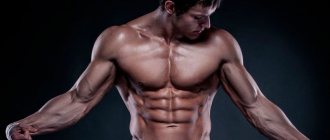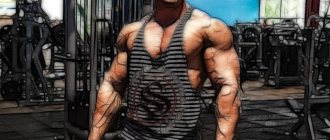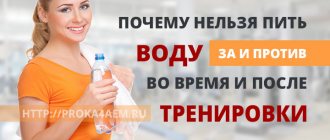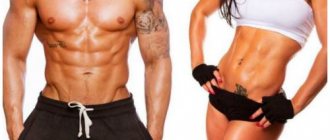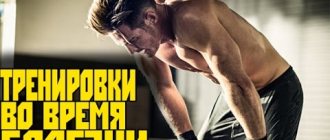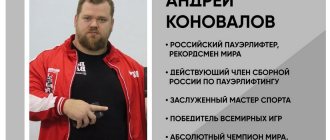Historical roots and current state[edit | edit code]
How should an effective training process be planned for athletes? This is a question that has long occupied the thoughts of prominent scientists, analysts and practitioners. In the history of ancient medicine and philosophy there are facts concerning the formation and development of the theory of training. Indeed, the process of its formation dates back more than 2000 years and originates from famous ancient philosophers and doctors. Thus, the great thinkers of antiquity Galen and Philostratus can be considered the real harbingers of modern training theory. The ancient Roman philosopher and physician Galen (Claudius Aelius Galen - 2nd century AD) wrote a treatise “Maintaining Health”, where he examined various aspects of physical fitness.
Another example of outstanding creative thought is associated with the famous ancient Greek scientist Philostratus (of Athens), who lived in the 2nd century. AD Philostratus probably gave the first idea of the periodization of the training process. His memorable essay “On Gymnastics” contains a description of pre-Olympic preparation, which, in the author’s opinion, should contain such a mandatory component of the program as a ten-month period of focused training (Drees, 1968).
This basic stage was followed by one month of centralized preparation for the Olympic Games, which took place in the city of Alice. Apparently, the modern practice of pre-Olympic training camps dates back to that time (i.e. about 2000 years ago). Another proposal of Philostrat concerns the compilation of a short four-day training cycle (a sequence of small, medium and large loads), which was later called a microcycle
.
Research Review
. In the history of ancient medicine and philosophy one can find memorable milestones in the development of the theory of sports training. These fragments of human creativity are associated with the names of great ancient thinkers such as Galen and Philostratus. The famous Roman physician and philosopher Galen (Claudius Aelius Galen - 2nd century AD) in his treatise “Maintaining Health” proposed an original classification of exercises, which can be considered the predecessor of the modern periodization of strength training (Gardiner, 1930). The sequence of his exercises from “exercises with strength but without speed” to the development of “speed apart from strength” and finally to intense exercises combining strength and speed (Robinson, 1955) strikes us with its logic and creativity, although in light modern knowledge there may be questions about it. Another example of annual periodization can be found in the essay “On Gymnastics” by the outstanding ancient Greek scientist Philostratus of Athens, who lived in the 2nd century. AD (Drees, 1968). His description of pre-Olympic preparation contains a mandatory ten-month period of focused preparation, followed by a month of centralized training (in the city of Alice) before the start of the Olympic Games. This final part of the annual cycle is reminiscent of the pre-Olympic training camps practiced by any national team today. The guidelines established by Philostratus regarding the sequence of light, medium and heavy training loads within a four-day training cycle can serve as a brilliant illustration of the ancient approach to short-term planning.
The modern Olympic era has stimulated activities related to athletic training. Perhaps one of the first monographs dedicated to high-level sports training was published by Boris Kotov. His book “Olympic Sport” (1916) presented an original concept of periodization of training, which proposed three stages of targeted sports preparation for upcoming competitions: general preparatory, more specialized and specific.
Further development of the theoretical foundations of sports training was carried out by one of the founders of modern sports medicine, V.V. Gorinevsky (1922). His voluminous publication contained a rationale for targeted sports specialization and an explanation of the role of versatile athletic training as the main condition for effective training in a particular sport. Another prominent training analyst G.K. Birzin (1925) provided one of the first descriptions of the biological nature of athletic training, emphasizing the interaction between fatigue and recovery after exercise. The author outlined possible options for a rational sequence of physical activity and recovery after it.
The theoretical basis for the periodization of sports training was further developed in the important publications of Lauri Pihkala (1930), who postulated a number of principles, such as the division of the annual cycle into preparatory, spring and summer phases and active rest at the end of the season. He also introduced the principles of alternating extensive and intense exercise, focusing on the correct load-rest ratio, and the fundamentals of long-term athletic training.
The know-how of the 1930s was creatively adapted and interpreted in several books published in the USSR. These were serious textbooks for sports universities on skiing (Bergman, 1938), swimming (Shuvalov, 1940), and athletics (Vasiliev, Ozolin, 1952), which contained relevant chapters on training planning. There it was already divided into general and special; focused preparation for competition was described appropriately, with particular attention to physical, technical and mental factors.
Despite the fact that the theory of sports training already had a fairly long history, a real milestone in its creation was the monograph by Lev Pavlovich Matveev (1964), in which he summarized the available information on the training of athletes and proposed a general approach to planning. This eventually became known as the “classical” approach. At a time when the theory of sports training suffered from a lack of objective knowledge and scientifically based principles of training, the book by L.P. Matveeva became a real breakthrough in coaching science. Thus, the periodization model with a logical structuring of an athlete’s training and a clear hierarchy of training cycles and blocks has become a universal tool for planning and analyzing the training process in all sports for athletes of different skill levels. At the same time, this dominant concept spread throughout the world and appeared in the works of other authors such as Nagge (1973), Martin (1980), Bompa (1984), etc.
#Sekta: information portal
I would like to make this the shortest post in the history of posts:
|
It's good if these rules are enough for you. As for me, I met them many times, but did not take them seriously. I thought that these rules were invented for lazy weaklings, that more training equals more results, that daily exercise is the only way to build the body I want.
If someone had clearly explained to me then what I was doing wrong, I would have had the body I have now five years ago.
| It's very simple: it should always be as difficult for you as it was at the beginning.. |
Yes, for me, running 15 laps of the morning interval is just ridiculous. But as soon as I rest for two or three weeks, I’m exhausted even after five! I don't try to push my training to the max right away, because that way I'll reach my comfort zone too quickly and the training will become mentally exhausting for me and useless for my body.
To give your best, work on your technique and constantly improve, you need passion. To keep the excitement going, you need to see the results. In the mirror or in the numbers of a fit test - it’s up to you to decide. But if there is no excitement, you need to take a break.
| Taking a break is a great decision at any time. |
I'm always really happy when I gain a little weight and get out of shape! This means that as soon as I start practicing, my old result will quickly come and bring more with it. Losing shape forever is impossible. It can only be temporarily lost until a new stage in your sports activities.
Previously, I only stopped when I was sick, or when my psyche gave out, I had a large-scale nervous breakdown, I hated myself, my body, I punished myself with food, for a long time I could not return to a healthy lifestyle and nutrition as manifestations of love to yourself. I took good, right things, but I did not know the extent of them. I pushed myself and suffered from fatigue and lack of results. All that was needed was to learn to relax. I noticed this when I was practicing yoga like crazy, every day, for many hours.
I have genetically very weak hip joints, and I injured them. I practiced through pain until my body refused to do even the simplest asanas. I violated the main principle of yoga - non-violence, in order to be sure that I was not lazy, that I was a warrior, that I had not lived my day in vain. It was quite natural that my subconscious associated an ocean of pain with yoga, and I dreamed of returning to classes, but I could not do this because I could not stop in time, and my subconscious saw a return to yoga as a return to this pain.
When, after several months, I returned to practice with healed injuries, I discovered that I could do those asanas that had not been given to me before. All the most difficult asanas were mastered by me in rest mode. That is, I tried to make them, and they didn’t work out, and after the break I just did them, as if I had always been able to.
Why couldn't you just take a break and not take it to the extreme?
It's the same with training. One day I got up to 3 full workouts a day. Naturally, this did not make me slimmer or more attractive. I was very tired and didn’t have time to do anything in life except these activities, and their uselessness was killing me. In addition, it seemed to me that without these trainings I would be destroyed, which made me even more unhappy.
It turns out that all you had to do was give up training for a while and gradually introduce them into your life: one, two a week, in order to see their effectiveness again.
The main secret is not a gradual reduction in the load, but a full rest, after which you start all over again, and keep your load at the “middle of the scale” level, where the maximum is what you did when you paid all your attention only to your body .
| Remember: your maximum is the danger zone, a temporary measure followed by psychological devastation. |
When a person meets his limit, it is a test, and after it you cannot immediately return to your normal life.
If you have questions about this topic, be sure to write in the comments.
| How do I see the ideal regime? |
The ideal regime is always changing. Either this is several weeks of morning training with additional blocks of the most difficult exercises, then it is marathon running, then evening workouts, then morning and evening workouts. Sometimes training 3 times a week, sometimes two. This could be a month in the gym with free weights and a month of cycling, a month of yoga, then a month of rest.
| Don't wait until the body is sick to protect itself from your attacks. And most importantly: have fun! |
Author: Olga Marques
More on the topic
- How taste perception influences food choice
- How to maintain health during an epidemic: a reminder for older people
- Chile
- 25
Basic provisions of the traditional theory[edit | edit code]
The cornerstones of the theory of sports training are the hierarchy of training cycles and the basics of periodization of training. This hierarchical system of training cycles, which are periodically repeated, is the central element of the training theory (Table 1). The top level of this hierarchical ladder is the four-year Olympic cycle, comparable to other great events in the world of sports. The next level is represented by macrocycles. The macrocycle usually lasts one year, but can be shortened to six months or more. Such flexibility in dividing the annual cycle is not related to the block approach to periodization. Macrocycles are divided into training periods. Preparation periods serve a key function in traditional theory because they divide the macrocycle into two main parts: the first for more general preliminary work (preparatory period) and the second for more sport-specific work in a specialized pre-competition period and participation in competition (competitive period). period).
In addition, there is a third (short) period, which is intended for active recovery and rehabilitation. The next two levels of the presented hierarchy are occupied by mesocycles (medium training cycles) and microcycles (short training cycles). The bottom rung of this hierarchical ladder belongs to training and exercises, which are the building blocks of the entire training system.
Table 1. Hierarchy and duration of training periods and cycles
| Training period | Duration | Planning method |
| Four-year (Olympic) cycle | Four years - the period between the Olympic Games | Long term |
| Macrocycle (possibly yearly) | One year or several months | |
| Mesocycle | Few weeks | Medium term |
| Microcycle | One week or several days | Short |
| Training | Several hours (usually no more than three) | |
| Training exercise | Minutes (usually) |
The periods of the training process provide sufficient freedom in its planning. External factors such as the competition calendar and seasonal changes dictate the presence of peak phases and possible restrictions. As a result, the trainer can choose the sequence, content and duration of training cycles and determine the specifics of means and methods for each of them.
In practice, the most important component of the presented hierarchical scheme is the structuring of the annual cycle. This component, as a rule, is considered to represent the actual periodization of the training process. The traditional approach points to the general characteristics of the relevant periods and divides them into several stages. The content of the training process of each stage is clearly determined by the volume and intensity of the load (Table 2).
Table 2. General characteristics of the periodization of the training process in the traditional approach (according to Matveev, 1977)
| Period | Stage | Goals | Training load |
| Preparatory | General preparatory | Increasing the level of development of general motor abilities. Expanding the range of different motor skills | Relatively high volume and reduced intensity of core exercises; wide variety of training tools |
| Specially preparatory | Increasing the level of special preparedness; improvement of more specialized motor and technical abilities | The volume of the training load reaches its maximum; intensity increases selectively | |
| Competitive | Competitive preparation | Improving special preparedness for the sport, technical and tactical skills; formation of individual schemes for successful performance of a competitive exercise | Stabilization and reduction of the training load volume simultaneously with an increase in the intensity of specific exercises for the sport |
| Direct pre-competition preparation | Achieving the best specific preparedness for the sport and readiness for the main competition | Small volumes, high intensity; the most accurate simulation of the upcoming competition | |
| Transition | Transition | Recovery | Leisure |
Initially, the traditional approach assumed one macrocycle per year, which was mainly associated with the practice of seasonal sports such as football, rowing, cycling, skiing, etc. Figure 3 shows an example of a typical single-cycle scheduling.
Rice. 3. Traditional representation of an annual training cycle with one macrocycle (annual periodization with one peak)
As noted, the single-peak annual cycle was particularly suitable for seasonal sports, but did not meet the requirements of those sports in which athletes competed at all times of the year and in each of them (like fencing, swimming, some doubles and team events). Later modifications allowed the use of two and three macrocycles within one annual cycle. Each macrocycle was divided into preparatory and competitive periods, which were characterized by certain combinations of training goals and loads. The transition period (of short duration) was included, for the most part, at the end of the season. This planning approach was called two- and three-peak annual periodization (Fig. 4).
Rice. 4. Representation of an annual cycle with two and three macrocycles (two- and three-peak annual periodization)
Mesocycles (training cycles of medium duration) have been interpreted in different ways. Most Eastern European authors proposed from seven to eleven types of mesocycles and systematized them in accordance with a number of conditions. One such classification is presented below (Table 3).
The classification presented above is the most concise compared to others. Despite the fact that various variants of mesocycle classifications look very informative, their practical implementation is limited by excessive detail and the artificial nature of differentiation.
Microcycles, as the shortest training cycles, have less controversy. Although there is no consensus among authors regarding the names of the various microcycles, the following summary table may help clarify the situation (Table 4).
Table 3. Types of mesocycles in accordance with the traditional approach to periodization of the training process
(after Zheliazkov, 1986)
| Name | Description |
| Retractor | Involves a gradual increase in load and adjustment to a more intense program. |
| Base | Involves performing the heaviest loads and lasts 4-6 weeks |
| Stabilization | Follows the baseline to stabilize the achieved level of preparedness |
| Pre-competition | Contains direct preparation for the upcoming competition |
| Competitive | Includes participation in the competition |
| Intermediate | Planned in case of a long competitive period to prevent excessive fatigue and prepare for further participation in the competition |
| Restorative | Characterized by reduced loads aimed at active recovery |
Table 4. Types of microcycles (according to various publications)
| Name | General characteristics |
| Tuning. retracting, initializing | Medium load level, gradual increase in training load |
| Load. developing, ordinary | Increased load level, use of large and significant training loads |
| Shock. shock, extreme loads | Using and imposing extreme training loads |
| Pre-competitive, tuning, peak | Average training loads, use of sport-specific means and methods |
| Competitive | Competitive exercises specific to the sport and sports discipline |
| Restorative. regenerating | Low level of training loads, use of a wide range of restorative agents |
* The underlined title corresponds to the version preferred by the author.
19.4. building training in large cycles (macrocycles)
19.4. building training in large cycles (macrocycles)
A macrocycle is a large training cycle of the six-month (in some cases 3-4 months), annual, multi-year (for example, four-year) type, associated with the development, stabilization and temporary loss of sports form and including a complete series of periods, stages, mesocycles.
Construction of training in multi-year macrocycles (at the stage of highest achievements). In sports practice, it is customary to distinguish four-year cycles associated with preparation for the main competitions - the Olympic Games, and for young people - for the Spartakiads of the Peoples of Russia, held once every 4 years. Options for constructing a four-year Olympic cycle are presented in Table 34.
Table 34
Options for constructing a 4-year Olympic cycle (dynamics
total volume and volume of increased intensity load)*
| Option | 1st year | 2nd year | 3rd year | 4th year | Recommended |
| First | Increasing total volume and high-intensity load volume | To young athletes preparing for their first Olympics | |||
| Second | Increase in total volume and volume of increased intensity load | Stabilization of the volume of training loads and the volume of increased intensity loads | Young and experienced athletes | ||
| Third** | Reducing total volume and volume of high-intensity exercise | Increasing total volume and high-intensity load volume | Reducing total volume and volume of high-intensity exercise | Increasing total volume and high-intensity load volume | Experienced athletes preparing for their second or third Olympics |
| Fourth | Stabilization of the total volume and increase in the volume of high-intensity loads | Reducing the total volume and increasing the volume of high-intensity loads | Often found in the literature, but there are few analogues in practice | ||
* The table uses materials from V.B. Gilyazova.
** Special cases of the third option: wave-like dynamics of the total volume and the volume of increased intensity load, in which the 1st, or 2nd, or 3rd year of the cycle is unloaded with an increase in indicators in the subsequent year of the cycle.
Construction of training in annual cycles. In the training of highly qualified athletes, one can find the construction of a yearly training based on one macrocycle (single-cycle), on the basis of two macrocycles (two-cycle) and three macrocycles (three-cycle) (Fig. 39). Each macrocycle has three periods: preparatory, competitive and transitional. When constructing a training process with two and three cycles, options called “double” and “triple” cycles are often used. In these cases, transition periods between the first, second and third macrocycles are often not planned, and the competitive period of the previous macrocycle smoothly transitions into the preparatory period of the next one.
Rice. 39. Options for constructing the training process in an annual cycle
(according to V.N. Platonov): 1 – preparatory period; II – competitive
period; III – transition period
The preparatory period is aimed at developing sports form - creating a solid foundation (general and special) for preparation for the main competitions and participation in them, improving various aspects of preparedness. In the competitive period, stabilization of sports form is carried out through further improvement of various aspects of preparedness, integral training is provided, direct preparation for the main competitions and the competitions themselves are carried out. The transition period (a period of temporary loss of athletic form) is aimed at restoring physical and mental potential after high training and competitive loads, and preparing for the next macrocycle.
The preparatory period (the period of fundamental preparation) is divided into two large stages: 1) general preparatory (or basic) stage; 2) a special preparatory stage.
General preparatory stage. The main objectives of the stage are to increase the level of physical fitness of athletes, improve the physical qualities that underlie high sports achievements in a particular sport, and study new complex competitive programs. The duration of this stage depends on the number of competitive periods in the annual cycle and is, as a rule, 6–9 weeks (in individual sports there are variations from 5 to 10 weeks).
The stage consists of two, and in some cases three, mesocycles. The first mesocycle (duration 2-3 microcycles) - retracting - is closely related to the previous transition period and is preparatory to performing high-volume training loads. The second mesocycle (duration of 3–6 week microcycles) – basic – is aimed at solving the main tasks of the stage. In this mesocycle, the overall volumes of training means and unidirectional private volumes of intensive means continue to increase, developing basic qualities and facilitating the mastery of new competitive programs.
Special preparatory stage. At this stage, the volume of the training load and volumes aimed at improving physical fitness are stabilized, and the intensity is increased by increasing the technical and tactical means of training. The duration of the stage is 2–3 mesocycles.
Competitive period (period of main competitions). The main objectives of this period are to increase the achieved level of special preparedness and achieve high sports results in competitions. These tasks are solved with the help of competitive and specially related preparatory exercises.
The organization of the special training process during the competitive period is carried out in accordance with the calendar of the main competitions, of which qualified athletes in most sports usually have no more than 2-3. All other competitions are of both training and commercial nature; Special preparation for them, as a rule, is not carried out. They themselves are important links in preparation for the main competitions.
The competitive period is most often divided into two stages: 1) the stage of early starts, or the development of the actual sports form;
2) the stage of immediate preparation for the main start.
The stage of early starts, or the development of the actual sports form. At this stage, lasting 4–6 microcycles, the tasks of increasing the level of preparedness, reaching a state of sports form and improving new technical and tactical skills in the process of using competitive exercises are solved. At the end of this stage there is usually a main qualifying competition.
The stage of immediate preparation for the main start. At this stage the following tasks are solved:
– restoration of performance after the main qualifying competitions and national championships;
– further improvement of physical fitness and technical and tactical skills;
– creation and maintenance of high mental readiness in athletes through regulation and self-regulation of states;
– modeling of competitive activity for the purpose of leading up to the start and monitoring the level of preparedness;
– providing optimal conditions for maximum use of all aspects of preparedness (physical, technical, tactical and mental) in order to transform it into the highest possible sports result.
The duration of this stage ranges from 6–8 weeks. It usually consists of 2 mesocycles. One of them (with a large total load) is aimed at developing qualities and abilities that determine a high level of sports achievements, the other is aimed at leading an athlete to participate in specific competitions, taking into account the specifics of the sports discipline of the participants, organizational, climatic and other factors.
Transition period. The main objectives of this period are to ensure proper rest after the training and competitive loads of the past year or macrocycle, as well as maintaining a certain level of fitness to ensure the athlete’s optimal readiness for the start of the next macrocycle. Particular attention should be paid to complete physical and especially mental recovery. These tasks determine the duration of the transition period, the composition of the means and methods used, the dynamics of loads, etc.
The duration of the transition period usually ranges from 2 to 5 weeks and depends on the stage of long-term training at which the athlete is, the system of organizing training throughout the year, the duration of the competitive period, the complexity and responsibility of the main competitions, and the individual abilities of the athlete.
Training in the transition period is characterized by a decrease in the total volume of work and minor loads. Compared, for example, with the preparatory period, the amount of work is reduced by about 3 times; the number of classes during a weekly microcycle does not, as a rule, exceed 3–5; classes with heavy loads are not planned, etc. The main content of the transition period consists of various means of active recreation and general preparatory exercises.
At the end of the transition period, the load gradually increases, the volume of active recreation equipment decreases, and the number of general preparatory exercises increases. This allows for a smoother transition to the first stage of the preparatory period of the next macrocycle.
With the correct construction of the transition period, the athlete not only fully restores strength after the past macrocycle, prepares for active work in the preparatory period, but also reaches a higher level of preparedness compared to the same period of the previous year.
The duration and content of periods and their constituent stages of preparation within a separate macrocycle are determined by many factors. Some of them are related to the specifics of the sport – the structure of effective competitive activity, the structure of athletes’ preparedness, the system of competitions that has developed in this sport; others - with the stage of many years of training, patterns of development of various qualities and abilities, etc., others - with the organization of training (in conditions of centralized training or on site), climatic conditions (hot climate, mid-mountain), material and technical level (simulators, equipment and inventory, restorative means, special food, etc.).
Criticisms of traditional sports training theory[edit | edit code]
Traditional athletic training theory was formulated at a time when knowledge of the topic was limited and few scientifically based guidelines for athletic training existed. The traditional periodization of sports training, which absorbed the then-current know-how of the 1960s, was a real breakthrough in the training process and sports science. Many of its elements adopted then remain in force today, including the hierarchical taxonomy and terminology of training cycles; differentiation between general and special sports training; changes in exercise volume and intensity; main approaches to short-term, medium-term and long-term planning, etc. It would be unrealistic to expect that all the ideas proposed more than five decades ago would still be applicable today.
One more circumstance must be taken into account. As can be seen from the previous sections, the foundations of the traditional theory of sports training were formulated mainly in the USSR. At that time, this theory became universal and monopolized methodological approaches to any scientific research and training plans for athletes. This ideologically dependent atmosphere of discussion was not very conducive to the expression of critical opinions about the concept supported by the official authorities. However, in the late 1970s, criticism emerged. The main criticism was directed at the central idea of the theoretical concept - the periodization of the process of training athletes. Over time, effective examples of planning and designing training programs based on the traditional periodization scheme emerged, and its shortcomings were noted by both creative coaches and analysts. As a result, criticism began to be published from the late 1970s and continues to be published today (Table 5).
Table 5. Summary of the essence of criticisms of the traditional theory of periodization of sports training
| Source | Problems | Comments by V.B. Issurina |
| Vorobyov, 1977 | Increasing the volume of training loads to the maximum does not lead to the achievement of the best results. The principle of gradualism is not universal; the load can change abruptly. Long-term, low-intensity training in the preparatory period reduces the effect of the entire season's training. The concept of general physical training needs to be revised to take into account the morphological and functional requirements for the athlete | The trend towards maximizing the volume of training was typical of the training of athletes at that time. A gradual increase in load was considered a fundamental condition in planning. The relatively long preparatory program did not adapt the athletes to the specific requirements of competitive activity. Basic physical training should be less generalized and more specific to the sport |
| Bondarchuk, 1986 | A large amount of work with low intensity in the preparatory period is useless. The duration of the preparatory period is variable and depends on individual requirements and the specifics of competitive activity. Wave changes in the volume and intensity of the training load cannot be considered a universal scheme. General physical training means do not form the basis for achieving readiness in a specific sport | This point of view is based mainly on the experience of speed-strength sports. The author claimed that the process of achieving athletic shape lasts from 2 to 8 months. In fact, both uniform and variable changes in training loads can be successfully implemented. The author did not find a positive transfer of the results of general preparatory exercises to sport-specific motor abilities |
| Tschiene, 1991 | The theory of sports training must postulate the primacy of the biological bases that explain functional adaptation and training transfer | The author presented a hierarchical diagram of the components of the theory of disputes. active training, the top level of which is occupied by Anokhin’s theory of functional systems |
| Zanon, 1997 | The theory of sports training has time limitations and needs to be updated taking into account new results | This theory has no scientific evidence to support its dominant role in athlete training. |
| Verkhoshansky, 1998 | Traditional theory is not based on the biological nature of sports training and even ignores it. The fundamental tenets of this theory are not supported by evidence drawn from coaching experience and research. The theory proposes to regulate the training impact using only manipulations with the volume of the load and its intensity. | Classical explanations relied exclusively on pedagogical arguments and definitions. The author showed the non-specific and abstract nature of theoretical positions and statements. Features and specifics of physiological adaptation were not taken into account |
| Issurin, 2002; Issurin, 2008 | The simultaneous development of a number of sports abilities leads to conflicting physiological reactions and reduces the effectiveness of training. Excessively long periods of low-intensity basic training do not provide sufficient training impact. The traditional model does not allow for a multi-peak competitive period | It is impossible to ensure a high concentration of properly directed loads and optimal interaction of incompatible training means. Long preparatory periods weaken the response to training load, reduce the rate of sports improvement and prevent the opportunity to take part in many competitions |
The periodization of sports training has not often become the object of particularly harsh criticism from analysts and coaches. In general, periodization makes use of periodic changes in human biological and social activity. For a long time, this theory has been accepted as a universal basis for the training process in any sport and for athletes of any skill level. In fact, the practice of training high-level athletes provided evidence that this theory does not provide universal tools for planning training or its implementation. Namely, A.N. Vorobyov, an internationally recognized expert in weightlifting and a former Olympic champion, identified serious contradictions between traditional theory and the realities of training elite athletes by analyzing data obtained during the training of weightlifters (Vorobyov, 1977). His harsh criticism was based on conclusions drawn after extensive and in-depth research, as well as on serious factors of the biological nature of the athlete’s body’s adaptation to training loads.
In the same way A.P. Bondarchuk, a world-famous authority in coaching science and a former Olympic champion in hammer throwing, noted the inconsistency of the theoretical principles and practice of training athletes in athletics. His criticisms were supported by his vast experience in training elite athletes and the results of his own research (Bondarchuk, 1986).
Sports training specialists from Germany (Tschiene, 1991) and Italy (Zanon, 1997) noted the inconsistency of traditional theory, based on updated scientific and methodological information. They also noted that each theory may have time limitations and its updating should be considered a reasonable and natural trend.
Somewhat later Yu.V. Verkhoshansky (1998) has become one of the harshest critics of traditional theory, emphasizing its overly scholastic nature, ignorance of the biological nature of training, lack of specific guiding principles for coaching, and contradictions between the proposed theoretical positions and the realities of modern sport.
Critical arguments in my own publications (Issurin, 2002; Issurin, 2008) were related to the shortcomings of the concept of traditional periodization of the training process for highly qualified athletes. My own experiences and research have come from conducting research in kayaking, canoeing, swimming and rowing. The most important criticisms have been related to the emergence of conflicting physiological responses when athletes work on many athletic abilities at the same time. For example, the training process of highly qualified athletes in endurance sports, martial arts, pairs and team sports, as well as artistic sports in the preparatory period involves the development of general aerobic abilities, muscle strength, strength endurance, improvement of general coordination and explosive strength, basic psychological and technical training, mastering tactical skills and treating injuries. Each of these factors requires special physiological, morphological and psychological adaptation. However, many workloads are incompatible and cause conflicting physiological responses. The causes and consequences of these contradictory reactions are summarized in Table 6.
Table 6. The main reasons for conflicting physiological reactions that arise during the training of high-level athletes using the traditional approach to planning
(Issurin, 2007)
| Factors | Controversies | Consequences |
| Energy supply | There are no adequate energy sources to simultaneously perform a variety of training loads | Energy is directed towards achieving many goals, but the main one does not receive adequate energy support |
| Recovery various physiological systems | Due to different recovery periods for various physiological systems, athletes do not achieve a sufficient level of recovery | Athletes get tired and cannot concentrate all their efforts on achieving their main goals |
| Compatibility of various loads | Different exercises often interact negatively due to lack of energy supply, technical difficulty and/or neuromuscular fatigue | The use of certain loads eliminates or reduces the effect of previous or subsequent training |
| Mental concentration | Stressful loads require a high level of mental concentration, which cannot be extended to many goals at the same time | It is difficult to maintain mental concentration, so exercises are performed with reduced attention and motivation |
| Training Stimuli for Athletes' Progression | The sport-specific progression of high-level athletes requires a high concentration of training stimuli, which cannot be achieved by simultaneously training many qualities | The simultaneous comprehensive development of many qualities does not provide a sufficient improvement in the level of preparedness of highly qualified athletes |
The limitations of the traditional training model mentioned above have been tested by many trainers, but not all of them have been critically evaluated. The most prominent trainers have come to the conclusion that the usual schemes for using highly effective stimulating loads must be revised. They found that the problem with training high-level athletes is that their progress requires large, highly concentrated workloads that cannot achieve many different goals simultaneously.
Another reason for criticism of the traditional periodization model lies in the inability to provide multi-peak competitive training throughout the season.
Example
.
Data from three world-class athletes - Marion Jones (USA), Sergei Bubka (Soviet Union, Ukraine since 1991) and Stefka Kostadinova (Bulgaria) show that pre-season and season training for each of them lasts about 300-320 days (Table 10) .
As can be seen from the table, the periods of time in which these athletes competed and demonstrated peak performance and when they had relatively high performance ranged from 135 to 265 days. Such a long period of time cannot be divided into traditional preparatory and competitive periods. On the other hand, the basic abilities of these athletes (maximum strength, aerobic energy production capacity) must be maintained at a fairly high level for 5-8 months. Therefore, the training program must include appropriate training cycles to improve basic abilities and recovery. The traditional design does not solve this problem and is unable to provide such training as part of the basic plan. Table 7. Multi-peak annual training of world-class athletes
(after Suslov, 2001; modification by the author)
| Athlete, events, best achievements | Year | Number of peaks per season | Typical Peak Intervals (days) | Duration of the competition period (days) |
| Marion Jones; running 100-200 m, long jump; 3-time Olympic champion in 2000, 5-time world champion | 1998 | 10* | 19-22 | 200 |
| Sergey Bubka; pole vault; Olympic champion in 1988, 5-time world champion, world record holder | 1991 | 7** | 23-43 | 265 |
| Stefka Kostadinova; High jump; 1996 Olympic champion, 2-time world champion, world record holder | 1998 | -11*** | 14-25 | In winter - 20; in the spring and in summer - 135 |
* There were eight competitive peaks in running and two separate peaks in long jump; all peaks are at the level of best personal results; ** All peaks are within 3% of his personal best result, namely 595-612 cm; *** All peaks are within 3% of her best personal result, namely 200-205 cm
Bearing in mind all the critical arguments and comments presented above, we can conclude that the realities of elite sports provide sufficient grounds for revising some of the provisions of the traditional theory of sports training and searching for alternative models and concepts.
What is load cycling?
Home ▸ Articles ▸ Training ▸ What is load cycling
Cycling is the process of repeating cycles of different durations within separate periods, which is one of the means of providing variability in training.
Cycling is the most important means of restoring an athlete and increasing the effectiveness of training. This is facilitated, first of all, by the correct distribution of loads in training cycles of varying duration.
Properly organized cyclicity of the training process (a relatively complete circuit with partial repeatability of individual exercises, classes, stages and entire periods within certain cycles) is one of the basic principles of athletic training.
Training cycles are divided into three types:
- microcycles. They usually coincide with weekly cycles, but may differ from them by 3-4 days, that is, have a duration of 4 to 12 days;
- mesocycles. Usually coincide with the monthly cycle, but can, at the athlete’s request, last from 20 to 50 days;
- macrocycles. They last from 3-6 months to 1 year.
Microcycles should alternate between load and rest, as well as higher and lower loads.
The positive effect of training can be achieved only if one or several “work” microcycles are followed by a relatively unloading microcycle, which allows restoring the body’s functional capabilities and ensuring the most effective course of adaptation processes. Otherwise, there may be a threat of physical and nervous exhaustion for the athlete.
The main condition for progress in bodybuilding is the constant systematic development of fitness as a combination of strength and endurance.
The development of fitness is carried out by reaching an increasingly higher level of training load and mastering it. But for successful, effective training, mastery of active cycling is absolutely necessary.
The duration of training is determined by the level of preparedness of each athlete and his well-being. But in the first 2-3 months, novice athletes should not train more than 1 hour a day or a little more. In the 4th month of regular training, their duration can be increased to 1.5-2 hours. Experienced bodybuilders usually spend about 3 hours in the gym, training 2-3 times a day for 40-60 minutes.
It is not advisable to perform the same exercise for more than 3 or less than 1 month. You can find an alternative replacement for any of the most effective exercises. Experienced bodybuilders usually have 2 to 3-5 interchangeable exercises available.
For several microcycles (one mesocycle), a bodybuilder needs to have a basic and at least 2-3 replacement exercises to train one or another muscle group. Subsequently, these additional exercises can replace the main one. Such a system will not allow the muscles to adapt to the same exercises.
To properly distribute loads, there are special programs that provide certain options for combining exercises. But in fact, each athlete develops his own unique cycling program over time, which allows him to achieve the best results.
When planning cycle training, the correct sequence of exercises begins to play a particularly important role, so in the process of creating and implementing it, some recommendations should be taken into account.
Beginning athletes should not spend a lot of time choosing one or another training method. They can easily train their muscles according to the scheme described above.
It is better to start training with the upper muscle groups (neck, shoulders, chest), and after that move on to the muscles of the back, arms and calves.
If at the beginning you perform exercises for the chest muscles, then you can replace them with exercises for the back muscles; exercises for the triceps should replace exercises for the biceps. After performing exercises for the synergistic muscles, the turn of exercises for the antagonist muscles begins.
To most successfully eliminate the lag in the development of any muscle group, it is necessary first of all to include in the training exercises that are most effective for this particular muscle group.
You can influence a specific muscle group in two ways:
- after completing the planned exercise in one series, move on to another;
- use super series, the number of which may depend on the level of physical fitness and experience of the athlete.
But the first series of exercises, one way or another, should train the synergist muscles, and the one that replaces it should train the antagonist muscles. It is recommended to include back stretching exercises in your workouts, such as hanging on a bar in between sets.
Having completed complex exercises (squats, bench press, etc.), you should move on to relaxation exercises, performing them with low to medium load.
Read also[edit | edit code]
- Sports training
- Goals and objectives of sports training
- Sports training
- Sports training methods
- Principles of Sports Training
- Training effects
- Trainability and heredity of athletes
- Transfer of training
- Training cycles (periodization of load and rest)
- Planning the training process General and special physical training
- Concentrated One-Directional Training Model
- Multi-objective block periodization model
Literature[edit | edit code]
- Bergman, B.I. (1940). Skiing. Textbook for physical education institutes. Moscow: publishing house FiS.
- Birzin, G.K. (1940). The essence of training. Moscow, Works on physical culture. Ed. 1, 2 and 5.
- Bompa, T. (1984). Theory and methodology of training - The key to athletic performance. Boca Raton, FL: Kendall/Hunt.
- Bondarchuk, A.P. (1986). Track and field athlete training. Kyiv: Health.
- Drees, L. (1968). Olympia, gods, artists and athletes. New York: Praeger.
- Gardiner, N. E. (1930). Athletics of the ancient world. Oxford:University Press.
- Issurin, V.B. (2002). The concept of block composition in the training of high-class athletes. Theory and practice of physical culture (Moscow); 5:2-5.
- Issurin, V. (2008). Block periodization vs. traditional training theory. A review. J Sports Med Phys Fitness; 48(1): 65-75.
- Kotov, B.A. (1916). Olympic sport. Basics of athletics. St. Petersburg: Maytov Publishing House.
- Martin, D. (1980). Grundlagen der Trainingslehre. Schorndorf: Verlag Karl Floffmann.
- Matveev, L.P. (1964). The problem of periodization of sports training. Moscow: publishing house FiS.
- Matveev, L.P. (1977). Basics of sports training. Moscow: Progress Publishing House.
- Pihkala, L. (1930). Allgemeine Richtlinien fur das athletics Training. In G. Kriimmel (Editor), Athletik Handbuch der lebenswichtigen Leibesiibungen. Miinchen: Lehmann; (pp. 185-198).
- Robinson, R. S. (1955). Sources for the history of Greek athletics. Chicago: Ares Publisher.
- Shuvalov, V.I. (1940). Swimming, water polo and diving. Textbook for physical education institutes. Moscow: publishing house FiS.
- Suslov, F. P. (2001). Annual training programs and the sport specific fitness levels of world class athletes. In: Annual Training Plans and the Sport Specific Fitness Levels of World Class Athletes, https:// www.coachr.org/annual_training_programmes.htm
- Tschiene, P. (1991). Die Prioritat des biologischen Aspects in der “Theorie des Trainings”; Leistundss-port, 6: 5-9.
- Vasiliev, G.V., Ozolin, N.G. (1952). Athletics. Textbook for physical education institutes. Moscow: publishing house FiS.
- Verkhoshansky, Yu.V. (1998). On the way to scientific theory and methodology of sports training. Theory and practice of physical culture (Moscow); 2: 21-41.
- Vorobyov, A.N. (1977). Weightlifting. Essays on physiology and sports training. Moscow: publishing house FiS.
- Zanon, S. (1997). Die alte “Theorie des Trainings” in der Kritik. Leistundssport; 3: 18-19.
- Zheliazkov, T. (1986). Theory and methodology of sport training. Sofia: Medicina i Phizcultura.
